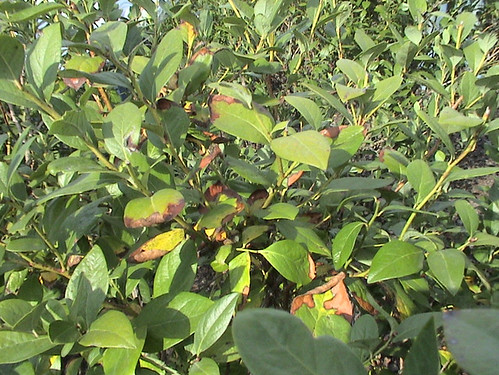 |
| Photo source: University of Georgia - CES |
Oliver and collaborators (2015) determined that Xylella fastidiosa isolates from both the subspecies multiplex and fastidiosa can cause blueberry leaf scorch under greenhouse conditions. Although currently only X. fastidiosa subsp. multiplex isolates have been recovered from infected blueberry plants in the southeastern United States, X. fastidiosa subsp. fastidiosa occurs commonly on infected grapevine in this region. These authors demonstrated the potential of X. fastidiosa subsp. fastidiosa as a blueberry pathogen, and identified the differences in interactions of blueberry with both both subspecies that could be helpful in the deployment of host resistance as a control strategy.
 |
| Photo: http://idtools.org/id/citrus/diseases/images/fs_images/01Leprosis.jpg |
Roy and collaborators (2015) provided a fascinating account of citrus leprosis, a disease that was first reported in Florida in the 1860s. Though the disease caused extensive losses, it ceased to be a serious concern in Florida by the 1930s. The disease, however, re-emerged as a major threat to citrus production in South and Central America and is rapidly expanding its geographic range. Citrus leprosis is caused by a complex of viruses involving both cytoplasmic and nuclear viruses. All five viruses that have so far been identified are nonsystemic and cause only local lesions, but differ in their host ranges. These viruses are transmitted by mites in the genus Brevipalpus. In their paper, they describe novel hosts for some of these viruses, new vectors within the genus Brevipalpus, and the replication of both cytoplasmic and nuclear viruses within mite species. This suggests the potential origin of these viruses in mite species, the crucial role of mites in disease transmission, and also the unique role of citrus as a vector of viruses and mites.
Source: http://apsjournals.apsnet.org/doi/full/10.1094/PHYTO-105-7-0001


No hay comentarios:
Publicar un comentario